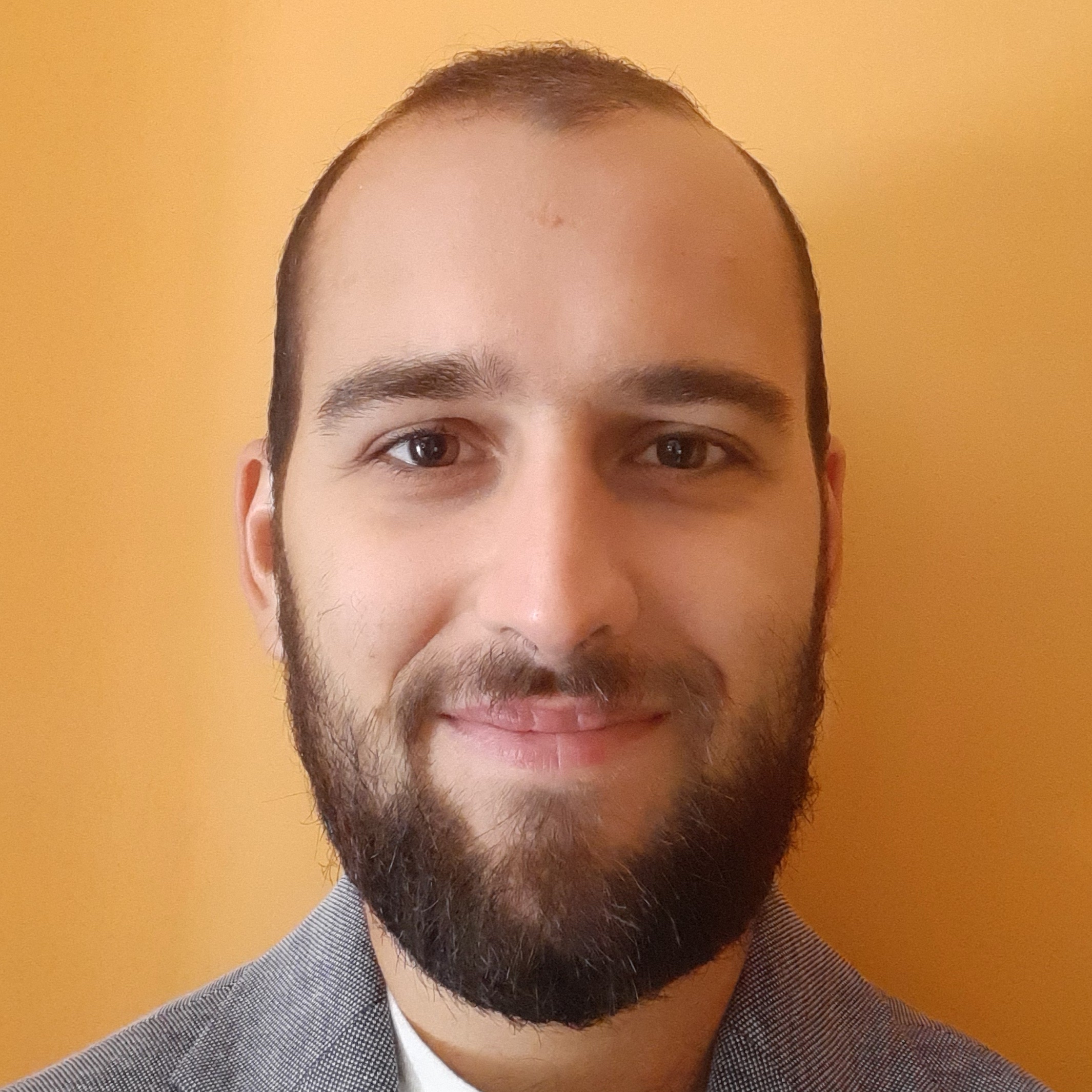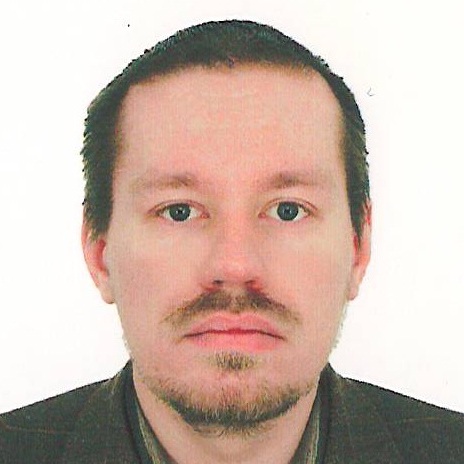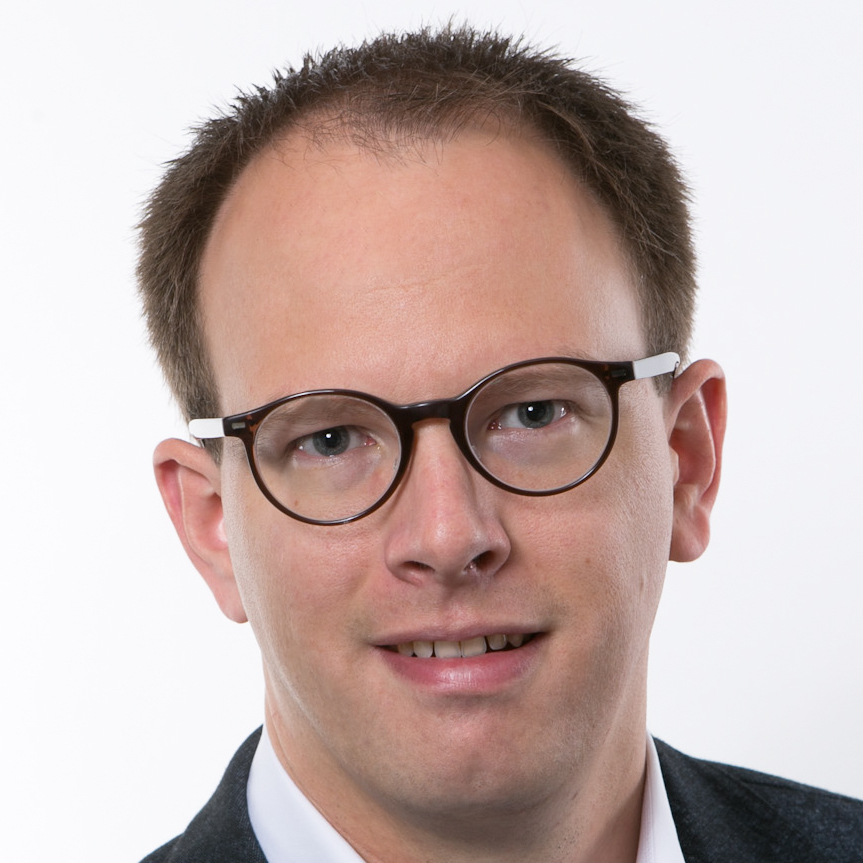
Virtual Forum, October 20–December 11, 2020
Keynote: Ignacio Sánchez
About the virtual forum
See past sessions
How it worked
The virtual forum was conceived as an opportunity to discuss the state of research on interreligious knowledge exchange. Half-hour project demos showcased ongoing projects in the area, while one-hour research paper discussions offered a chance to interact on a deeper level with researchers who were in the process of formulating approaches to the subject. The forum featured
- pre-circulated drafts of research papers, with the opportunity to collaboratively comment in a private group using the web tool Hypothes.is
- live Zoom sessions, with two presentations, 1–2 responses from invited participants (for research paper discussions), followed by open Q&A
- proceedings: revised papers from the forum will be submitted to a special issue of medieval worlds: comparative & interdisciplinary studies, a peer-reviewed, open-access journal published by the Austrian Academy of Sciences (ISSN 2412-3196).
Background
From the eighth century to the thirteenth century and beyond, scholars in the Abbasid and neighboring realms pioneered study in medicine, mathematics, the astral arts, and many other disciplines. Scholarly treatises from that era together with biographical sources such as Ibn Abī Uṣaybiʿa's History of Physicians and documentary texts from the Cairo Genizah show that this scholarly activity was not isolated to a single community. Instead, it emerged from a rich exchange between scholars affiliated with many different communities: Jewish, Christian, Muslim, Zoroastrian, Hindu, Samaritan, and others. Sometimes this exchange occurred through books or letters while at other times it was face-to-face in formal, institutional settings, side-by-side in the workplace, or even mediated through patrons, servants, or family members.
In the framework of the project "Communities of Knowledge" (funded by the German Federal Ministry of Education and Research), we invited contributions to a series of discussions on the topic of person-to-person knowledge exchange among Near Eastern communities during Abbasid rule.
The keynote session featured Dr. Ignacio Sánchez (University of Warwick), whose recent contributions to the field include helping to prepare a brand new edition and translation of Ibn Abī Uṣaybiʿa, The Best Accounts of the Classes of Physicians (Leiden: Brill, 2020).
Past Sessions (Archive)
Tuesday, October 20, 2020
Communities of Knowledge
Usaybia.net
Tagging, Prosopography, and Networks

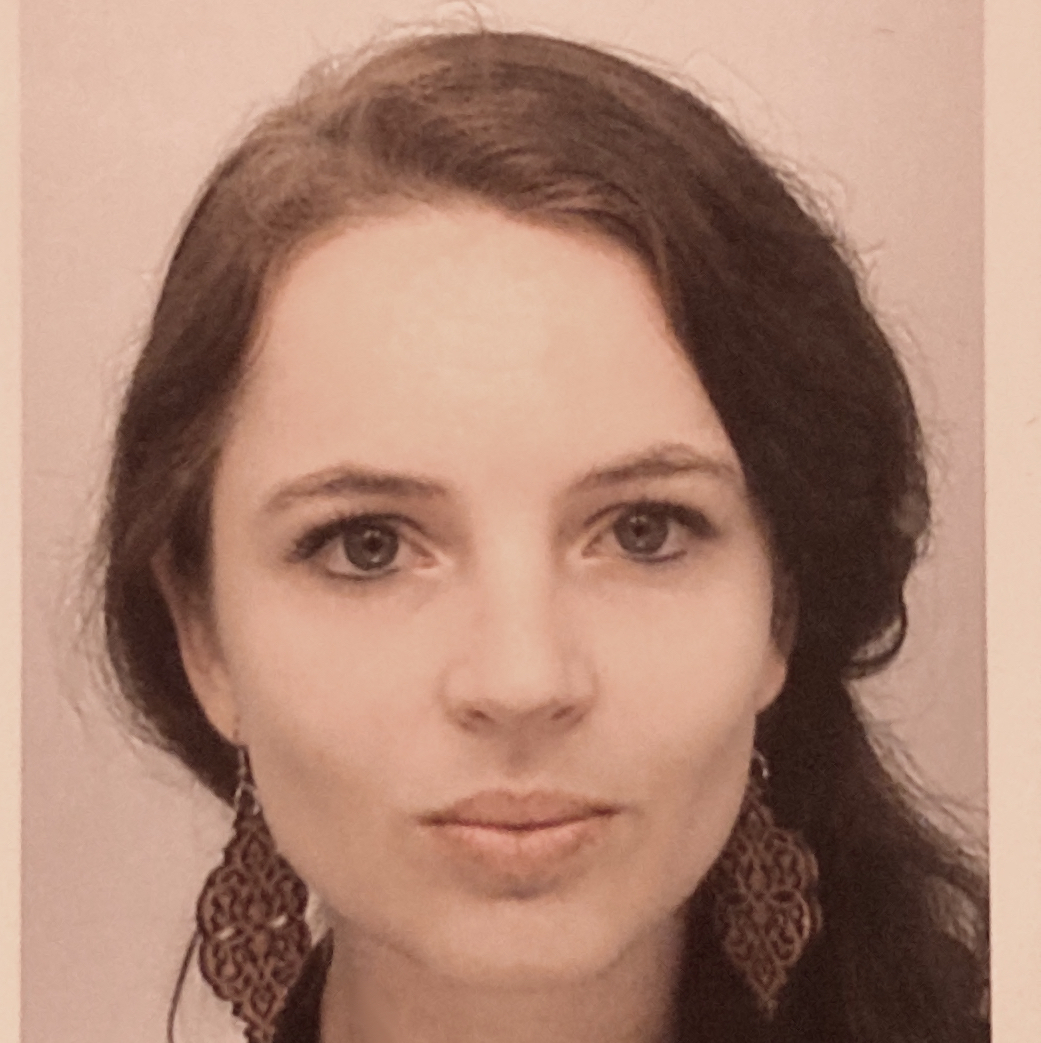
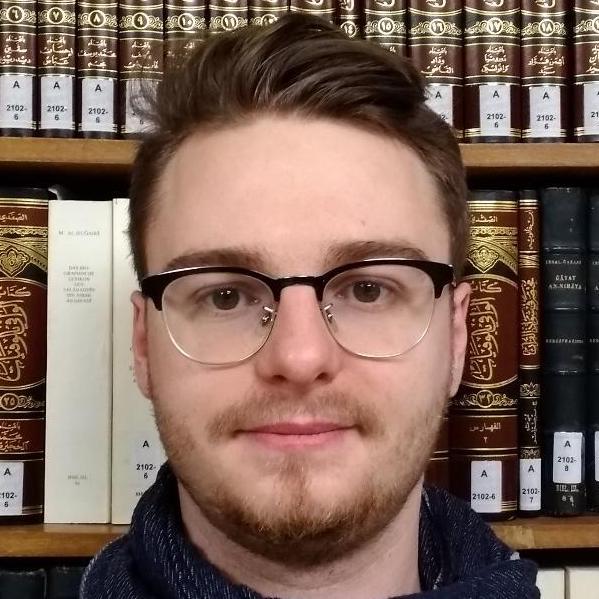
Nathan P. Gibson, Nadine Löhr, Robin Schmahl
University of Munich (LMU)
The project “Communities of Knowledge: Interreligious Networks of Scholars in Ibn Abī Uṣaybiʿa’s History of the Physicians” aims to examine the social encounters of Christian, Muslim, and Jewish scholars in the Abbasid Near East, broadly defined as 750–1258. While the fact of exchange between scholars of many different communities during this period is well established, and their accomplishments are well known, the ways in which this exchange occurred are not as well researched. Ibn Abī Uṣaybiʿa’s (1203–1270 AD) biographical dictionary provides rich information about such interactions, which sometimes occurred directly between scholars, but other times involved much larger networks of people, including patrons, patients, family members, rulers, and slaves.
The project asks, in general, how Ibn Abī Uṣaybiʿa depicts these networks, as well as, more specifically, which people, places, and types of communication were involved in them. This project demo will explain the different stages of this analysis. First, we identify and “tag” people and places in the source text. Next, we use these tags to create prosopographical nuggets called “factoids,” which encapsulate many different assertions throughout the text about the people involved and form the basis for mapping their relationships as a network. Finally, we analyze these networks, using quantitative metrics to focus our attention on the persons, places, or features in the network that call for in-depth qualitative study. We anticipate—and our preliminary results suggest—that this process will bring to light specific but underappreciated aspects of interreligious exchange.
The “Communities of Knowledge” project is funded by the “Kleine Fächer – Große Potentiale” program of the German Federal Ministry of Research and Education, 2018–2021.
A Ladder of Heresy?
Religion,
Dhimmīs and
Medicine in the
Light and Shadow of
Ibn Abī Uṣaybiʿa
The Buyid Muʿtazilite vizier Ibn ʿAbbād (d. 385/995) famously referred to medicine as ‘a ladder of heresy’ (sullam al-ilḥād). This statement reflects the opinions of a number of Muʿtazilite theologians who, already since the 9th century, polemicised against medicine. These critiques were focused on the epistemological status of a discipline mainly concerned with particulars (juzʾiyyāt), and on the challenge that the Hippocratic-Galenic theories posed for the debates on creation, causation and God’s omnipotence. These theologians did not target a particular religious group but rather those scholars who departed from the consensus about God’s design, Muslims and non-Muslims alike, most especially the group referred to as Dahriyya (Eternalists).
The suspicion of unbelief –and the shadow of the Dahriyya– never abandoned physicians, but the critique against medicine eventually become a critique of dhimmīs. Medicine had been almost monopolised by Sabians and Christians under the early Abbasids and the Ayyubids, and was largely practiced by Jews in the Fatimid and Mamluk periods. From the 12th/13th century onwards, however, we witness an increasing concern about the confession of physicians that led to the islamisation of this field with the promotion of Muslim medical practitioners and the emergence of the so-called prophetic medicine (ṭibb nabawī).
Regretfully, Ibn Abī Uṣaybʿia is almost completely silent about all these questions. This ‘Islamisation of medicine’ is perceivable in the increase of Muslim physicians and the references to conversions that appear in the 13th c. biographies of the ʿUyūn al-anbāʾ, but the physician portrayed by this author is a rather idealised image, untainted by these petty polemics.
In this paper I will survey a number of sources that offer a rather different glimpse of the role of medicine and dhimmī physicians in pre-Modern Islam. I shall be looking at the way theologians attacked medicine and how it was defended by both Muslim and non-Muslim physicians, sometimes with very similar arguments. I will argue that these polemics cannot be simply subsumed into the dichotomy Islamic/non-Islamic sciences, nor reduced to a clash between Muslim and non-Muslims.
Ignacio Sánchez (PhD Cambridge 2011) is Senior Research Fellow at the Department of Classics and Ancient History of the University of Warwick. His main research interests are Medieval Islamic intellectual history, literature, and history of medicine and science. He has published on a variety of topics including history, adab, geography, Islamic endowments and medicine, including the edition and translation of the Ikhwān al-Ṣafāʾ’s Epistle 4: On Geography (with J. Montgomery) and Ibn Abī Uṣaybiʿa’s The Best Accounts of the Classes of Physicians (with E. Savage-Smith et al.). He is section editor of Brill’s Encyclopaedia of Islam Three (History of Science) and founder editor of the journal Endowment Studies.
Tuesday, October 27, 2020
The Zoroastrian
Priests
of the Islamic Era
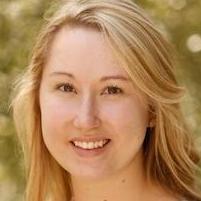
Kayla Dang
Yale University
Respondents: Craig A. Molgaard (University of Arkansas for Medical Sciences), Nadine Löhr (Saxon Academy of Sciences and Humanities)
The Zoroastrian priesthood was greatly diminished over the centuries after the Arab conquest, and its traditions so scattered that only a fragment of the Zoroastrian knowledge that had once existed still remained by this time. Yet despite the gap between these priests and the end of the Sasanian kingdom, this corpus of texts is taken to be the product of a continuous tradition of priestly transmission. This paper questions standard narratives of Zoroastrian history, textual transmission, and priestly genealogy by looking at Zoroastrian priests in Arabic sources of the ninth through eleventh centuries alongside contemporary Middle Persian texts.
These references span authors, genres, and centuries of Arabic literature, appearing in histories, geographies, adab works, heresiographies, ṭabaqāt literature, and more. These texts cite the Zoroastrian priests of the ʿAbbāsid era (al-mawbaḏ in Arabic) as authors of books, informants on topics of Persian religious or cultural significance, sages attributed with wise or clever sayings, advisors to kings and caliphs, and participants in religious debates in the court of the caliphs. When we look outside the extant corpus of Zoroastrian texts, we find that there were mobeds active in the wider intellectual circles and operating under the patronage of Muslim rulers, and there were multiple communities of Zoroastrians living under Islamic rule; and it is not clear to what extent they communicated with each other or followed similar practices. This paper will pay particular attention to references in Ibn al-Nadīm’s Fihrist, al-Bīrūnī’s al-Āṯār al-bāqiya, and an unpublished letter of Abū Isḥāq Ibrāhīm al-Ṣābīʾ, which all point to a late tenth-century floruit of a particular line of Zorostrian priests. Rather than assuming a narrative of orthodox transmission, these and other Arabic sources from the period can shed light on where and when Zoroastrian communities thrived, what groups and individuals were considered authoritative, and how they negotiated that authority under new Islamic regimes.
Kayla Dang is currently studying the continuity of the Zoroastrian priesthood from the Sasanian period into the Islamic period through the socio-political history of the priests themselves. Her research investigates their social networks, practices of religious education, textual composition and compilation, and manuscript traditions, utilizing literary and material sources in a variety of languages including Middle Persian, Parthian, Armenian, Arabic, and Syriac. Kayla is a PhD candidate in Near Eastern Languages and Civilizations at Yale University (M.A. Iranian Studies, SOAS, University of London; M.A. Classics, University of Southern California; B.A. Classics, University of Notre Dame).
The Role of
Traders
in the Diffusion of the
Indo-Arabic
Numerical System in Antiquity

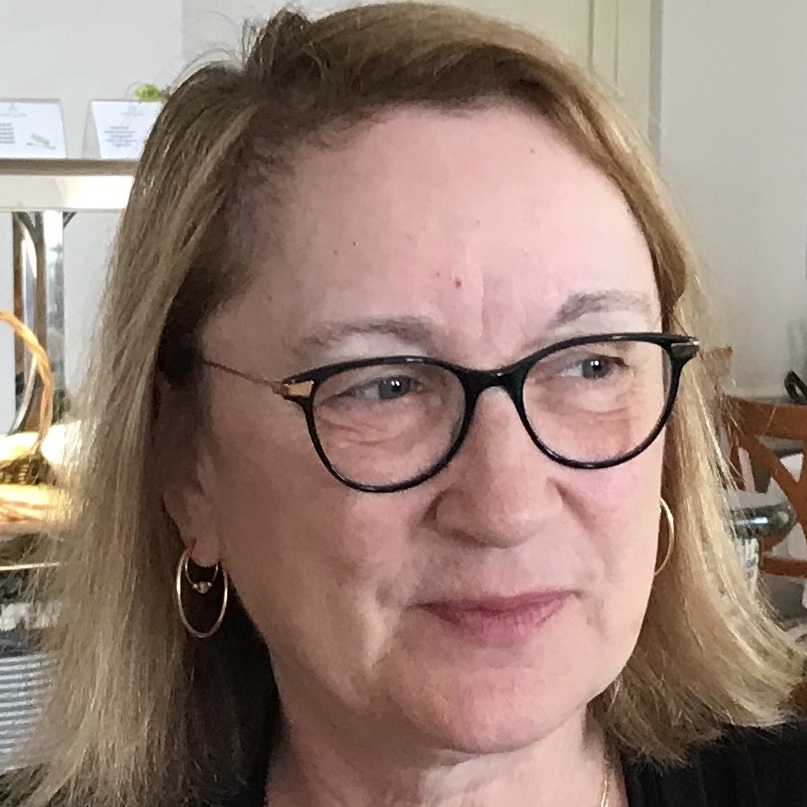
Craig A. Molgaard and Amanda L. Golbeck
University of Arkansas for Medical Sciences
Respondents: Pouyan Rezvani (Bavarian Academy of Sciences), Sonja Brentjes (Max Planck Institute for the History of Science)
Many different scholarly communities participated in the diffusion of the Indo-Arabic numerical system from India to Iraq and thence to the African littoral and to Spain. This positional decimal numeral system is the most common symbolic system today for the representation of numbers, and was invented by Indian mathematicians between the 1st and 4th centuries. It reached Baghdad from Persia by 732 A.D., and from there spread to the eastern Mediterranean.
Much of this diffusion was carried out by Roman trading vessels moving down the Red Sea from Alexandria to cross the Indian Ocean to trade precious metals for Indian spices. In turn Indian trading vessels made the voyage to Alexandria. After the fall of Egypt in 31 AD to the Roman Empire of Augustus, this trade was accelerated, including over 120 large vessels a year sailing down the Red Sea for Indian and Sri Lankan ports. In this paper, we will note several key features of this trade. First, this enormously large spice trade supported Roman military activity for centuries by means of a value tax at the borders of 25%. Control of Egypt was crucial to this tax. Second, movement of the trade fleets from the Red Sea and returning was based on a careful understanding of seasonal monsoon activity for propulsion. This predictable wind propulsion allowed 6 knots per hour or better. Third, borrowing of numerical systems by Arabic traders while working in India was common but not systematic, as India hosted a multitude of different numerical systems using a different number of digits. Limiting the number of digits to ten as the Indo-Arabic system diffused across the Mediterranean Sea was the last major innovation of the spread of this system and its three variant glyphs.
References
MOLGAARD, C.A. (2018). Factors in the Diffusion of Islamic Mathematics in the Mediterranean. Proceedings of the Second International Statistics Conference in Croatia, Opatija, May, 2018. New Advances in Statistical Methods: Applications for a Better World, Volume 2, No. 1, Pp. 43-48.
MOLGAARD, C.A. and Foss, T. (2016). Economic and Literacy Factors in the Diffusion of Zero and the Hindu-Arabic Numeral System in the Mediterranean and Adriatic Culture Areas. Proceedings of the First International Statistical Conference in Croatia, May 5-6, 2016, Zagreb, Croatia. Pp. 228-233.
Tuesday, November 3, 2020
For the Care of
Body & Soul
The Greek Bible
and an Arab-Islamic Botanical Text
in a 10th-Century Palimpsest Fragment
Respondents: Matthew Monger (Norwegian School of Theology, Religion and Society), Konrad Hirschler (Freie Universität Berlin)
This paper is focused on the study of an unpublished palimpsest fragment from the Qubbat al-khazna in Damascus, which presents a very interesting structure. The Greek scriptio inferior, already identified as a biblical text, coexists with the Arabic scriptio superior − referred to an Islamic text − which has not been properly studied in its textual and paleographical features so far. The Arabic text is an excerpt belonging to the medical-botanical work entitled Mukhtaṣar fī-l-ṭibb (“Compendium of Medicine”) − known from only one manuscript witness so far − written by the Andalusian jurist ‛Abd al-Malik b. Ḥabīb (d. 238 AH/AD 853).
The textual examination of the Arabic text will be conducted along with the paleographical and codicological analysis of the fragment, in order to suggest some hypotheses about its dating and provenance. Such a multidisciplinary research represents a starting point from which some thoughts, referred to the Arabic scriptio superior in the first place, has been carried out. For example, the study of the Arabic text − which testifies a high degree of knowledge in the fields of botany and medicine − along with the palimpsest order of the fragment, has suggested a monastic environment as its probable place of origin. Furthermore, the fragment represents a documentary witness which highlights the relevance of the body care, as attributed in such environment, in addition to the peculiar process of the discard of a religious text − the Bible in Greek − apparently sensed as no more useful, in a context arguably yet arabized. More interestingly, it is a clear evidence of the fact that such a vision of life was pursued acquiring ideas and concepts, also derived from different cultures − even if it would have implied the study and the use of an Islamic text, written in the Arabic script.
Matteo Pimpinelli is currently a PhD student and a master's graduate from “Sapienza” University of Rome, with a thesis entitled: “Two unpublished fragments from the Mukhtaṣar fī-l-ṭibb by ‘Abd al Malik b. Ḥabīb (d. 238 AH/AD 853) from the Qubbat al-khazna in Damascus” (supervisor: Prof. A. D’Ottone Rambach). The study of the Arabic language and culture represents the main topic of his interest. Thanks to a scholarship for the Erasmus exchange program, he studied at the University of Alicante. His PhD project is focused on the study of a 13th century treatise on ophthalmology.
A Trans-Denominational
Friendship
in Late 14th-Century Aleppo
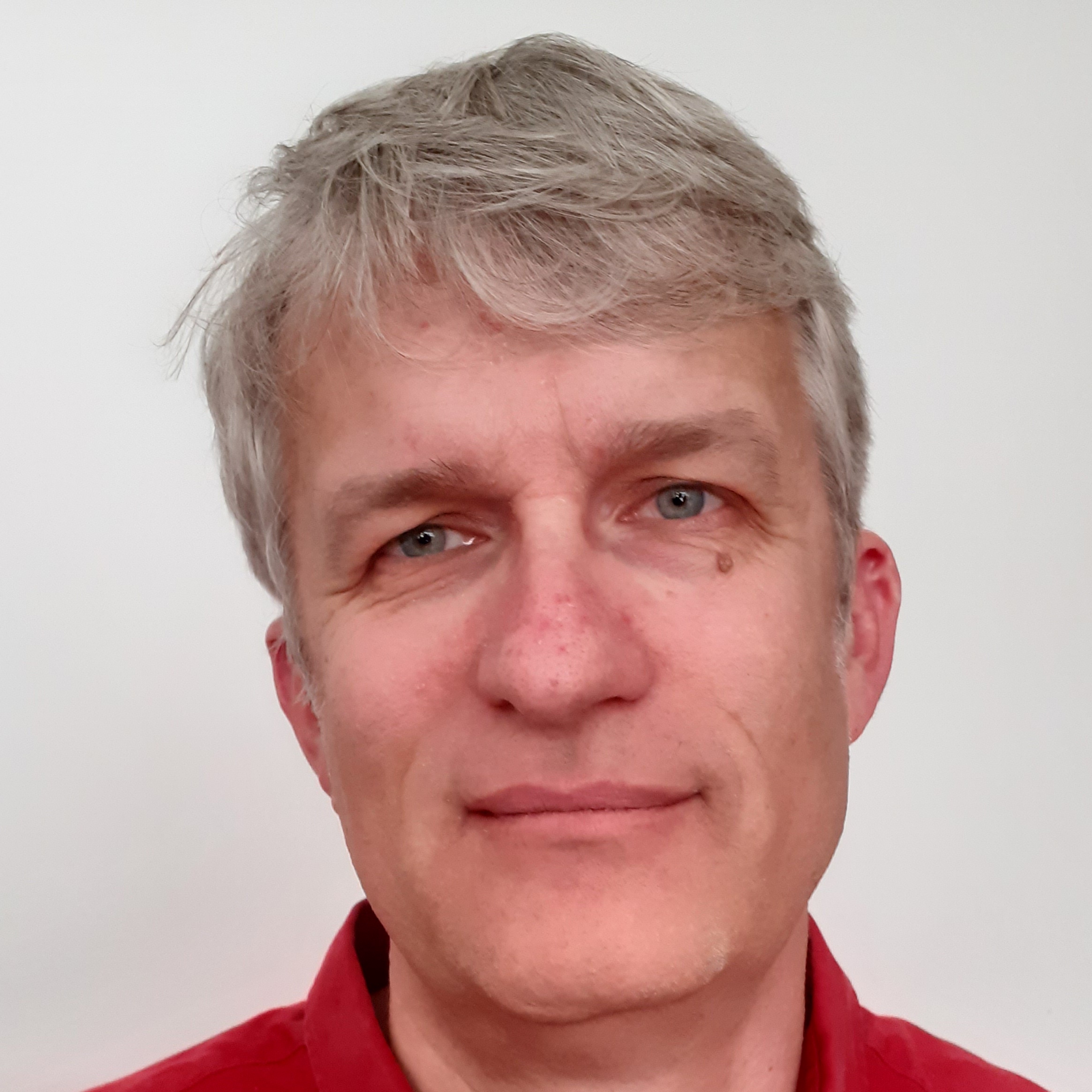
Gregor Schwarb
Israel Institute for Advanced Studies
Respondents: Judith Olszowy-Schlanger (University of Oxford)
An Arabic commentary on Maimonides’ Mishneh Torah, Sefer ha-Maddaʿ, Hilkhot Yesodei ha-Torah I–IV, attributed to a Ḥanafī muwaqqit in late 14th century Aleppo, has attracted the attention of many distinguished scholars over the last century and a half. The research history of this significant document is almost as intriguing as the text itself and attests to the difficulty of 19th- and 20th-century scholarship to come to terms with the peculiar setting of a Muslim scholar commenting on a Jewish halakhic treatise.
In my presentation, I will briefly summarise the research history to illustrate how historiography is prone to be (mis-)guided by cultural predispositions and shaped by issues, concerns, and blind spots rooted in the historian’s realm of experience.
The commentary by ʿAlāʾ al-Dīn Abū l-Ḥasan ʿAlī ibn Ṭaybughā was the result of a longstanding friendship with Rabbi David ben Yehoshuʿa, the grandson of Maimonides’ great-grandson. The impact of this friendship comes to the fore on several occasions in David’s own commentary on the Mishneh Torah. In David’s view, this friendship represented far more than a mere social acquaintance with a Muslim soulmate. Like his illustrious ancestor, he conceived of the Foundational Laws of the Torah as a straightforward, ‘exoteric’ digest of all theoretical sciences, in such a way that a well-conceived commentary upon these chapters should build upon the most advanced scientific knowledge available at a given time. The perfect commentator should therefore be a leading scientist of his time, irrespective of his religious affiliation.
Gregor Schwarb (SOAS University of London) is currently a fellow at the Israel Institute for Advanced Studies in Jerusalem and works on several research projects related to manuscripts from the Second Firkovič Collection at the National Library of Russia in St. Petersburg. He studied theology, philosophy and Jewish studies in Freiburg (CH), Jerusalem and Damascus. His research focuses on trans-denominational intellectual thought in the pre-modern Islamicate world (https://soas.academia.edu/GregorSchwarb). Between 2004 and 2013 he promoted a series of research projects at the Institute of Islamic Studies of the Freie Universität Berlin leading up to the formation of the Research Unit Intellectual History of the Islamicate World (2011-13). After 2016 he acted as editor-in-chief of Index Islamicus and visiting scholar at SOAS, University of London.
Friday, November 13, 2020
Sleepy
Animals
Barhebraeus on Sleeping
and Dreaming Animals
Respondents: Florian Jäckel (University of Hamburg), Pavel Basharin (Russian State University for the Humanities)
Barhebraeus, the great Syrian Orthodox polymath and theologian (1226-1286), treats animals’ abilities to sleep and dream in his inedited Book on Animals of his philosophical summa Cream of Wisdom, a book that draws heavily on Avicenna, though also on Aristotle.
In comparison with his sources, however, he might be understood as allowing for more animals to have the ability to dream than Aristotle initially did, even though using Aristotle’s animal examples for viviparous quadrupeds, the primary group of animals able to dream for Aristotle.
The paper will, firstly, address the question which groups of animals are considered as being able to dream according to Aristotle, Avicenna, Barhebraeus, Albert the Great in the Latin West, who was also in particular influenced by Avicenna, as well as the Iraqi zoologist Ibn Abī al-Ashʿath, who stood more in the Galenic than Aristotelian tradition, and point to changes and ask whether these changes were intentional or just due to paraphrasing a given source.
Secondly, the paper will address the question which sources Barhebraeus had at his disposal and where. Though witnessing the very end of the Abbasid era, he still benefitted from translations begun during the early Abbasids. Especially the early combined Arabic transmission of three Aristotelian zoological works still had an impact on his Syriac Book on Animals.
Thirdly, the question of collaborating with other scholars shall be addressed, though this has to be done ex negativo for the composition of the Animals. While Barhebraeus is assumed to have met, for example, the Muslim scholar Naṣīr al-Dīn al-Ṭūsī in person at the Maragha observatory and academy, which had an influence on his astronomical works, and also a personal acquaintance with Ibn Kammūna, a philosopher of Jewish descent, has recently been assumed by Roggema regarding theological texts, this form of cooperation surprisingly doesn’t seem to be the case for his biological works, where he primarily relies on Aristotle and Avicenna. The paper will look into the reasons for that and argue tentatively that this assumed lack of a manifestation of a knowledge transfer by personal exchange in his biological works, in contrast to other works by him, might here be due to a neglect of zoological topics or a changed curriculum in post-classical Islamic philosophy, and that this lack of contemporary or at least post-Avicennan available texts led him to take recourse to Aristotle and Avicenna instead.
Jens Ole Schmitt is currently a postdoc at LMU Munich as part of Peter Adamson’s ERC group “Animals in Philosophy of the Islamic World.” He graduated from Frankfurt University in physics and later in oriental studies and philosophy, after also having studied business administration and classics. He received his PhD also there (2008) with an edition and translation of the Physics of Barhebraeus’s Avicennan summa Cream of Wisdom (supervised by Profs. Daiber/Teule). He is interested in Syriac, especially the reception of post-Avicennan as well as Greek philosophical thought in the writings of the eminent Syrian Orthodox polymath Barhebraeus, Arabic philosophy, and adab literature, especially by the Arabic writer al-Jāḥiẓ. His current projects include an edition and translation of Barhebraeus’s Prior and Posterior Analytics, a German translation of Avicenna’s Metaphysics, and an edition and translation of a neglected anthology of works by al-Jāḥiẓ. As a postdoc at LMU Munich in the ERC group “Animals in Philosophy of the Islamic World,” his main focus is on the Arabic philosophical zoographer Ibn Abī l-Ashʿath, who is more influenced by Galen than Aristotle. Before coming to Munich, he was a postdoc for several years at Wuerzburg University in Dag Hasse’s projects of a new edition of Averroes’s Latin Great Commentary on Aristotle’s Metaphysics as well as the Arabic and Latin Glossary on medieval Latin translations of Arabic works.
The Ideas of
Pseudo-Empedocles
in Baghdad Mysticism
of the 9th–10th Centuries
An Influence of
Nestorian Intellectual Tradition
Respondents: Alexander Treiger (Dalhousie University), Jens Ole Schmitt (University of Munich [LMU])
The early ʻAbbasid epoch was famous for adaptation of Greek science through the intellectual work of Syrian scholars. The Nestorian center of learning and intellectual work, the monastery Dayr Qunnā near Baghdad had a special patronage. In the ʻAbbasid epoch this center trained personnel for the state administration. The most eminent figure in Islamic tradition, who probably was influenced by Dayr Qunna, was the eminent Baghdad Sufi master al-Ḥallāj. Some researchers even found him to be a hidden Christian.
Really some points of al-Ḥallāj’s teaching about divine love, annihilation of the human spirit in God and incarnation (ḥulūl) of the divine nature (lāhūt) in the human nature (nāsūt), and unity with God (ittiḥād) have clear parallels with Syrian Christianity. His cosmological doctrine has a number of parallels with ideas of pseudo-Empedocles that gained popularity in Syrian monasteries. The crucial points of al-Ḥallāj’s cosmology were promoted by Abū ’l-Ḥasan ʻAlī al-Daylamī in the Kitāb ʿaṭf al-alif al-maʾlūf ʿalā l-lām al-maʿṭūf. Al-Daylamī was a disciple of Abū Ḥayyān al-Tawḥīdī and belonged to the tradition that cultivated the cosmological ideas of pseudo-Empedocles. In the ʿAbbasid epoch this tradition comes from Dayr Qunnā. The Commentary on Aristotle's Metaphysics written by Mattā b. Yūnus, the eminent representative of the local scientific tradition shows this tendency. We can reconstruct the crucial points of the Arab partisans of pseudo-Empedocles according to several texts of al-Shahrastānī, Abū Ḥayyān al-Tawḥīdī, al-Daylamī and al-Ḥallāj. For example, the presence of five emanations and four elements which are moved by love and hostility, and passionate love as the most important divine attribute. The materia prima appeared through this attribute.
Pavel Basharin (Ph.D., Philosophy) is Assistant Professor in the Department of Modern East of the Faculty of History, Political Science and Law and Director of the Centre for Iranian Studies at the Russian State University for the Humanities in Moscow. His areas of interest include Islamic philosophy, Persian language, classical Arabic texts, language of the Qur'an, Shi'ism and Sufism in Iran, history of Iran, and pre-Islamic religions in Iran. He has more than 150 publications about Islamic mysticism, Islamic and Iranian demonology, Iranian languages and comparative linguistics.
Tuesday, November 24, 2020
Off the
Record
Networks of
Lost Arabic Books

Nadine Löhr
Saxon Academy of Sciences and Humanities
Respondent: Robert Alessi (Centre National de la Recherche Scientifique)
Library records and manuscript catalogues are fundamental sources for historians, nevertheless, researchers are aware that a transmission process is determined by both the extant manuscripts as well as by a great number of texts which were lost in time. Historians of German literature claim that for every preserved work there are thousands of lost ones. While it is difficult to appreciate the number of lost sources, it is vital to consider the untransferred and lost knowledge in order to understand the exchange of ideas within a community.
To get a better insight into once well known scientific Arabic literature, this article seeks to trace networks evolving around works which were produced and circulated between the 8th and 13th century and are presumed to be lost today.
As a starting point, this study will be based on an analysis of the works mentioned in Ibn Abī Usaibiʿa’s History of Physicians. I wish to draw attention to the quantity of missing works still read, or at least heard of by Ibn Abī Usaibiʿa. I examine general trends of what kind of books got lost and (if feasible) through what processes. Thereby it may be possible to observe certain regional, cultural, temporal or religious trends, and determine what the percentage of lost medical literature from a certain region is.
The second part of this article will focus on the afterlife of astronomical and astrological works lost after the 13th c. An analysis of networks evolving around the lost works will be backed up with further resources and literature. I wish to understand who were the authors and owners of books on the astral sciences now lost? Were these books according to Ibn Abī Usaibiʿa’s insights shared, studied and discussed within various communities or were they held in so-called “small world communities”?
Nadine Löhr is a doctoral researcher at the Bibliotheca Arabica project (Saxon Academy of Sciences and Humanities, Leipzig) and a research associate at Communities of Knowledge. Previously she worked as a coordinator for the DAAD multilateral Higher Education Dialogue Violence, Forced Migration and Exile: Trauma in the Arab World and Germany. Since 2017 she has been working as a research assistant at Ptolemaeus Arabus et Latinus (Bavarian Academy for Sciences and Humanities), where one of her tasks is preparing descriptions of Arabic manuscripts for the project’s catalogue. Her research focuses on the dissemination and reception of astronomical and astrological manuscripts in the MENA-Region.
Interreligious
Scholarly Collaboration in
Ibn al-Nadīm’s
Fihrist
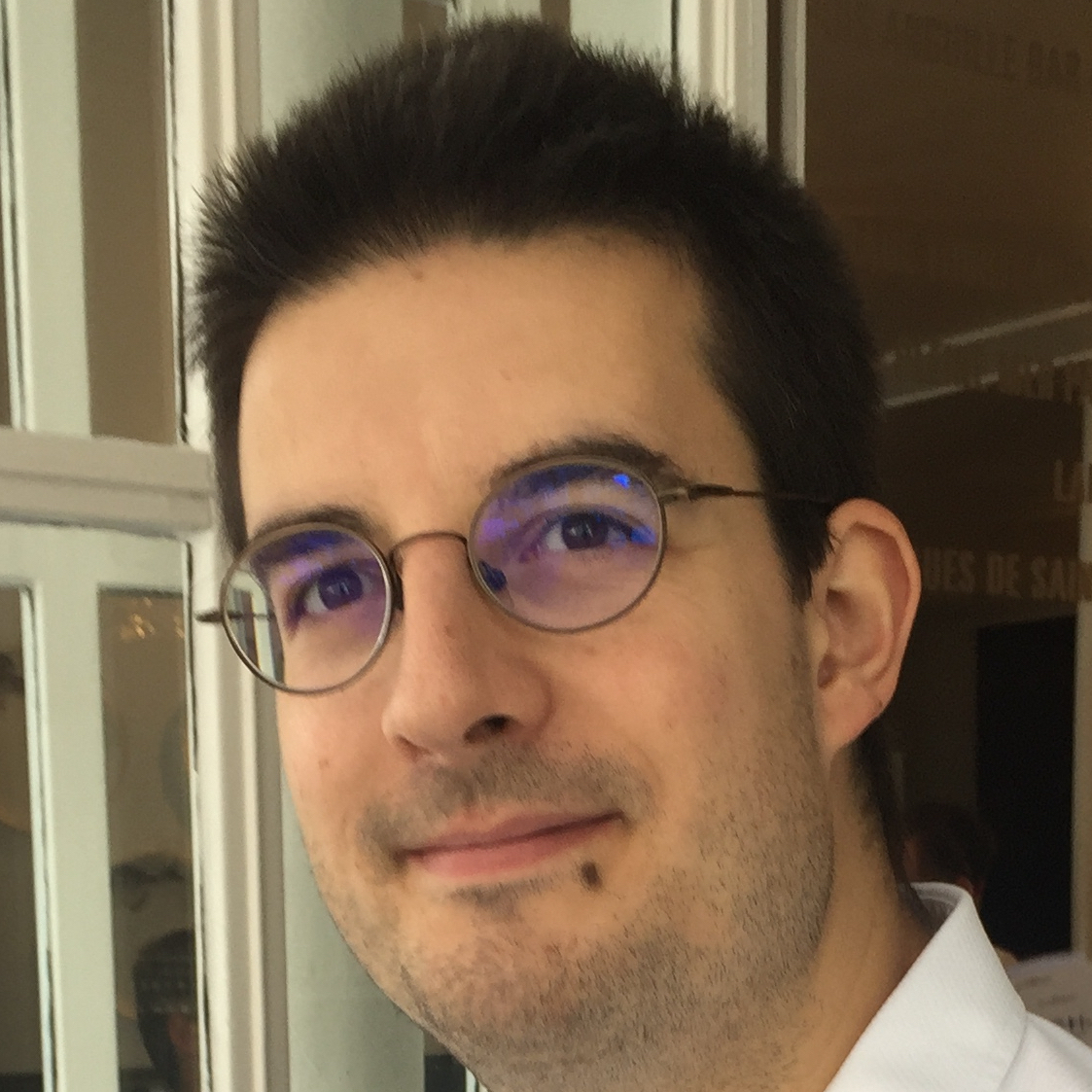
Rémy Gareil
Lumière Lyon 2 University
Respondent: Nadine Löhr (Saxon Academy of Sciences and Humanities)
Ibn al-Nadīm’s Fihrist is a major primary source for Abbasid intellectual history. Although its importance for the field has been acknowledged since its first edition at the end of the 19th century, the studies dealing with this encyclopaedic work as a whole are remarkably rare, since its material has been mostly used by researchers looking for biographic details regarding specific scholars of the Islamic Middle Ages.
Our intent is to approach the Fihrist as a coherent totality, taking into account the overarching structure of the text and the repeating patterns from one section to another, and to assess its treatment of interreligious scholarly collaboration through a systematic survey of the relevant instances. Since Ibn al-Nadīm (d. 330/990) gathered pieces of information about a wide range of scholars, it is very interesting to examine the ways in which he depicts the cases of interaction – and sometimes conflict – between Jewish, Christian and Muslim scholars. It is particularly important when it comes to specialists of rational sciences, as it is well-known that certain fields such as medicine, astronomy and philosophy involved scholars from different religious backgrounds in Abbasid and Buyid centres of knowledge, especially in the context of translation activities.
Three main lines of inquiry will guide our presentation. First, the forms, times and places of interreligious exchanges in the Fihrist. Then, the position of the author regarding this phenomenon: does he explicitly acknowledge it or does he merely mention it without labelling it? Lastly, since these collaborations mainly appear in the context of anecdotes, how can we interpret these narratives, and use them to improve our understanding of the social and religious dynamics of the Abbasid scholarly milieu? Our hope is that by focusing on the general structure of this work, we will shed a new light on the problematic of interreligious collaboration in the Abbasid society, as well as lay the ground for drawing parallels with Ibn Abī Uṣaybiʿa’s ʿUyūn al-anbāʾ in that respect.
Dr. Rémy Gareil holds a PhD in Medieval Islamic History from the Sorbonne (Université Paris 1 Panthéon-Sorbonne) and is currently a Temporary Teaching and Research Assistant at Lumière Lyon 2 University. He specializes in Abbasid and Buyid-era intellectual and political history. His research focuses on the political uses of scientific discourses, the construction of scholarly identities and networks, and the historical and literary representations of Baghdad.
Tuesday, December 1, 2020
The Actuarios
Johannes Zacharias (14th-Cent.)
and His Treatise about the Psychical Pneuma:
Critical Edition
and its Contextualisation
within Transcultural Medical History
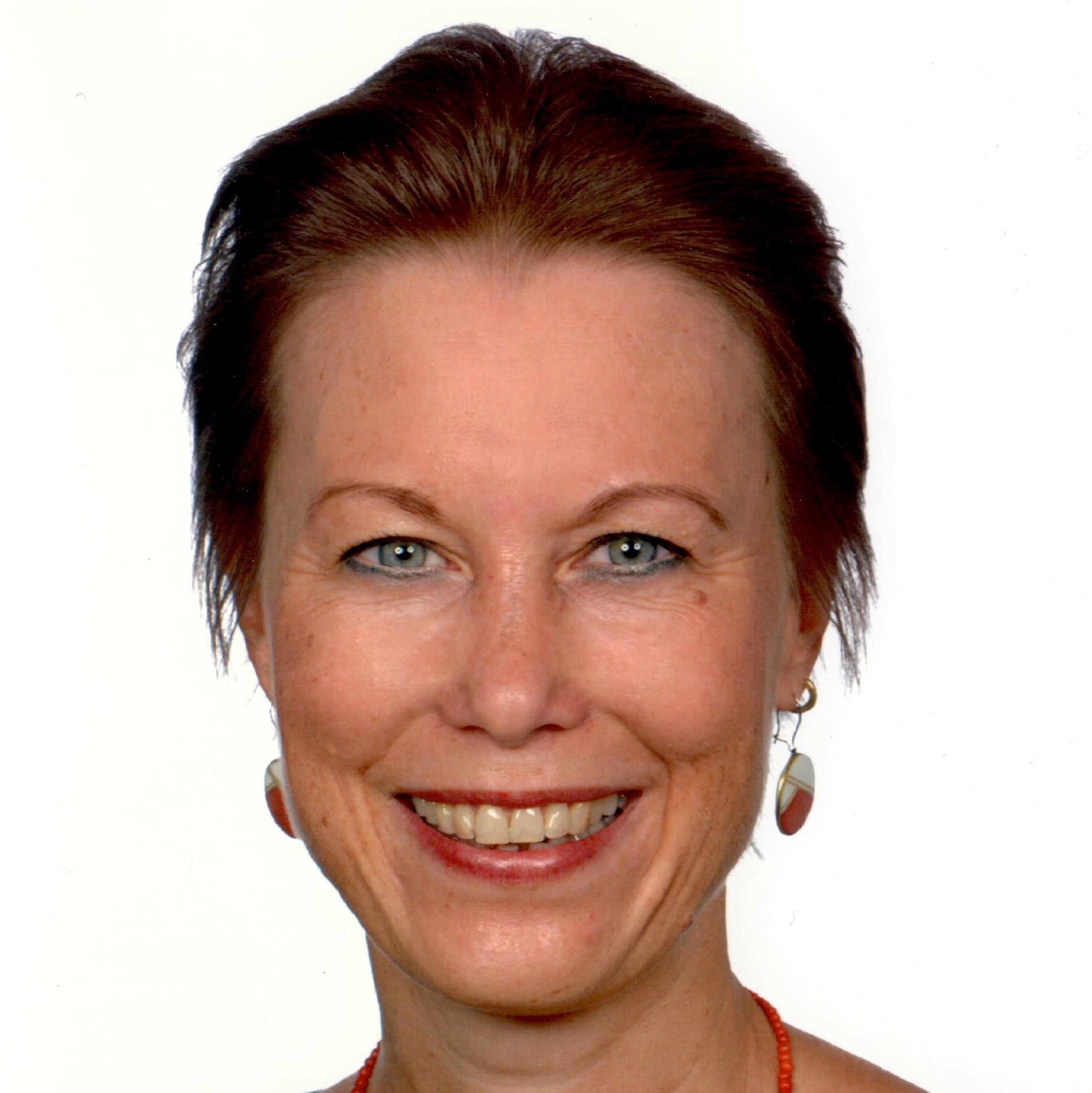
Isabel Grimm-Stadelmann
Bavarian Academy of Sciences
Being an Actuarios, Johannes Zacharias was a high-ranked physician in a transcultural Byzantine surrounding, characterised by a highly developed hospital culture. Within this setting the therapeutical dialogue between Byzantine physicians and their Jewish, Arabic and Latin colleagues was widespread and of great importance for the continuous evaluation of therapeutical concepts and the relevant medical literature.
The manuscripts transmitting Johannes' treatise provide interesting insights into this process.
Isabel Grimm-Stadelmann (Ph.D., PD Dr. Habil.) is a researcher at the Bavarian Academy of Sciences, where she focuses on the critical edition of the late-Byzantine Aktuarios Ioannes Zacharias’ treatise on the psychical pneuma. She lectures regularly at LMU Munich within the framework of a transdisciplinary teaching cooperation. Her research focus lies on Byzantine medicine and its transcultural dimension. She also is co-editor of the series “Byzantinisches Archiv Series medica” and is a member of various international cooperations and research groups in the field of medical history.
Teaching and Learning
by the Book
at the Turning Point Between
the Ayyūbid and Mamlūk Eras
as a Source of Information on
Methods and Scientific Controversies
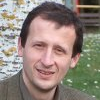
Robert Alessi
Centre National de la
Recherche Scientifique
Respondent: Nathan P. Gibson (University of Munich [LMU])
Islamic medicine certainly inherited a refined tradition from Greek medicine, but also has seen an important shift in medical training. First, the structures radically changed: they went from an era where medicine passed on from father to son, or where being the disciple of a master was very much like becoming part of his family—to an era where several types of medical training coexisted: from father to son, by teaching oneself (viz. by reading handbooks) or by resorting to the master through classes in hospitals or medical schools.
Obviously, the first two ways must be taken into consideration for approaching properly how the sources spread into the Arabic world and how they were handled by scholars, many of them were travellers and collectors of books. Nevertheless, the latter, to which one must add discussions between trained physicians, gives us a lively and vivid insight into the way Arabic medicine evolved through debates between prominent figures.
In this respect, in connection with the transmission of medical art and the handbooks, of great interest are the issues related to the religious affiliation of the physicians, either Christians, Jews or Muslims, at the turning point between the Ayyūbid and the Mamlūk eras (in the XIIIth century AD) between Damascus and Cairo, for they all did refer to Greek sources, but in different ways. On this account, of particular interest are the literary patterns that are used to put on stage these controversies as they may rely on traditions already found centuries ago, in authors such as al-Jāḥiẓ or al-Tawḥīdī.
We will try to explore the most significant examples provided by Ibn Abī Uṣaybiʿah, some of which deal with teaching, others with research, showing active discussions between physicians, regardless of religion, facilitated by the sultan himself who provided a special place at his residence to be used as a majlis for research. Surely, depending on whether they were Muslims, Jews or Christians, the social positions they held were different, but also complementary as they had different access to the sources. Even the most prominent Muslim physicians had to rely on colleagues who could recall Galenic sources word for word. This point explains to a large extent the faithfulness of the text preserved in Ibn Abī Uṣaybiʿah to the Greek sources.
Robert Alessi is a researcher affiliated with the French Centre National de la
Recherche Scientifique (UMR 8167, Orient & Méditerranée, Paris-Sorbonne,
France).
His
area of research is Greek and Arabic medicine, particularly the transmission of
medical
knowledge and the formation of the physicians. At present, he works on a critical edition of Hippocrates'
Epidemics, Books 2, 4 and 6 which may be considered per se as a
research and teaching programme led by a master surrounded by colleagues and
disciples. He also works on Arabic sources (viz. translations and compilations
of
Greek sources, ṭabaqāt) and Arabic medicine. Finally, as a programmer, he
works in the field of digital humanities applied to Greek and Arabic classical
studies. (See for example ekdosis for
typesetting TEI xml compliant critical editions and arabluatex for complex Arabic
typesetting.
Friday, December 4, 2020
Talking with Enemies,
Writing to Friends:
Timothy I and the Construction of
an Eastern Christian Response to Islam
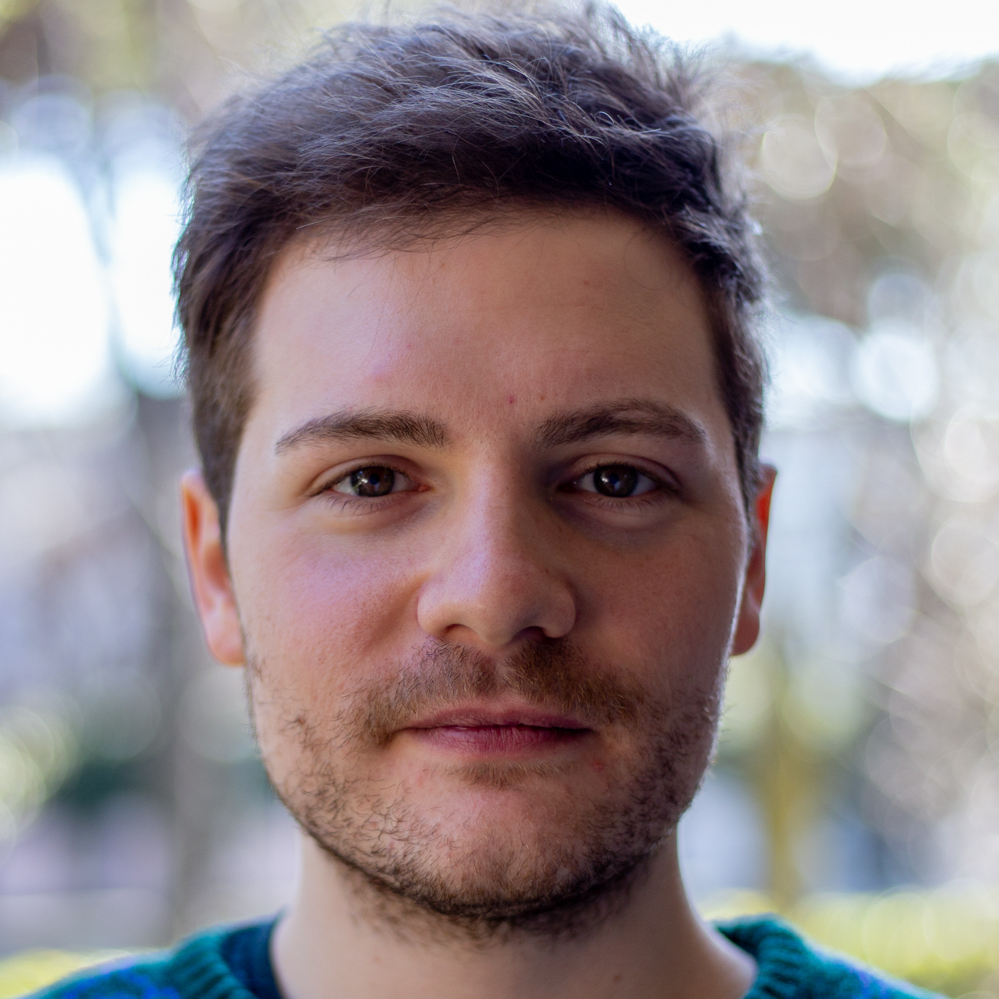
Andrea Bellettato
Ca’ Foscari University of Venice and Hebrew University of Jerusalem
Respondents: Rocio Daga Portillo (University of Munich [LMU]), Joachim Jakob (Catholic Diocese of Linz)
Timothy I (ca. 740-823 CE/AH 122-208) was katholikos of the Church of the East for more than forty years between the end of the 8th and the beginning of the 9th century (ca. 780-823/AH 164-208). During this time, he moved the seat of the patriarchate to Baghdad, where he entertained close relationships with the Abbasid court. A number of his surviving letters, written in Syriac, attest to this. In particular, two letter-treatises of considerable length relate encounters Timothy had with a Muslim Aristotelian philosopher (letter 40) and with caliph Al-Mahdi himself (letter 59).
These letters document an intense theological debate that took place between Christians and Muslims at the court, one that used Aristotelian logic as a sort of shared language in order to discuss urgent religious and philosophical matters. While scholars have paid much attention to this material, there remains to be studied how Timothy modulated his explanations according to the intended audience. My paper aims to analyse how Timothy managed to express his beliefs in different ways depending on different occasions. Far from being a faithful reflection of the dialogues that took place at the caliph’s court, I maintain that Timothy’s letters are carefully planned literary products that served a double purpose. On the one hand, they conveyed a climate of peaceful and productive exchange with Muslim scholars and sovereigns, but on the other, they played the crucial role of providing other Christians with a ready-made set of answers to some of the thorniest questions and objections that their Muslim counterparts could pose to them. By extending the view to those letters (esp. 34-6) that were aimed solely at an internal, Christian audience, I will show how this process of reader-oriented variation occurred and I will attempt to reconstruct Timothy’s preoccupations as Head of the eastern Church.
Bibliography
Berti, Vittorio, Vita e studi di Timoteo I, Patriarca cristiano di Baghdad. Ricerche sull’epistolario e sulle fonti contigue. Cahiers de Studia Iranica 41, Chrétiens en terre d’Iran 3. Paris: Association pour l’avancement des études iraniennes, 2009.
Griffith, Sidney Harrison, “Disputes with Muslims in Syriac Christian Texts: From Patriarch John (d. 648) to Bar Hebraeus (d. 1286)”, Pages 251-273 in Religionsgespräche im Mittelalter. Edited by Lewis, B. and Niewöhner, F.. Wolfenbütteler Mittelalter-Studien 4. Wiesbaden: Otto Harrassowitz, 1992.
id., “From Patriarch Timothy I to Ḥunayn ibn Isḥāq: Philosophy and Christian Apology in Abbasid Times; Reason, Ethics and Public Policy”, Pages 75-98 in Christians and Muslims in Dialogue in the Islamic Orient of the Middle Ages. Edited by Tamcke, Martin. Beiruter Texte und Studien 117. Beirut: Orient-Institut / Würzburg: Ergon Verlag, 2007.
id., “The Syriac Letters of Patriarch Timothy I and the Birth of Christian Kalām in the Mu‘tazilite Milieu of Baghdad and Basrah in Early Islamic Times”, Pages 103-132 in Syriac Polemics: Studies in Honour of Gerrit Jan Reinink. Edited by van Bekkum, Wout Jac. and Drijvers, Jan Willem and Klugkist, Alex C.. Orientalia Lovaniensia Analecta 170. Leuven: Peeters, 2007.
id., “Patriarch Timothy I and an Aristotelian at the Caliph’s Court”, Pages 38-53 in The Christian Heritage of Iraq: Collected Papers from the Christianity of Iraq I-V Seminar Days. Edited by Hunter, Erica C.D.. Gorgias Eastern Christian Studies 13. Piscataway, NJ: Gorgias Press, 2009.
Heimgartner, Martin, “Die Disputatio des ostsyrischen Patriarchen Timotheos (780‒823) mit dem Kalifen al-Mahdi”, Pages 41-56 in Christians and Muslims in Dialogue in the Islamic Orient of the Middle Ages. Edited by Tamcke, Martin. Beiruter Texte und Studien 117. Beirut: Orient-Institut / Würzburg: Ergon Verlag, 2007.
id., “Trinitätslehre beim ostsyrischen Patriarchen Timotheos (780‒823) in der Auseinandersetzung mit dem Islam”, Pages 69-80 in Christliche Gotteslehre im Orient seit dem Aufkommen des Islams bis zur Gegenwart. Edited by Tamcke, Martin. Beiruter Texte und Studien 126. Beirut / Würzburg: Ergon Verlag, 2008.
id., ed. Timotheos I., Ostsyrischer Patriarch. Disputation mit dem Kalifen al-Mahdī. CSCO 631-632, Syr. 244-245. Louvain: Peeters, 2011.
id., “Der ostsyrische Patriarch Timotheos I. (780–823) und der Aristotelismus: Die aristotelische Logik und Dialektik als Verständigungsbasis zwischen den Religionen”, Pages 11-22 in Orientalische Christen und Europa: Kulturbegegnung zwischen Interferenz, Partizipation und Antizipation. Edited by Tamcke, Martin. Göttinger Orientforschungen, I. Reihe: Syriaca 41. Wiesbaden: Harrassowitz Verlag, 2012.
Hurst, Thomas Richard, “The Syriac Letters of Timothy I (727–823): A Study in Christian-Muslim Controversy”. Ph.D. dissertation, The Catholic University of America, 1986.
Suermann, Harald, “Der nestorianische Patriarch Timotheos I. und seine theologischen Briefe im Kontext des Islam”, Pages 217-230 in Zu Geschichte, Theologie, Liturgie und Gegenwartslage der syrischen Kirchen. Ausgewählte Vorträge des deutschen Syrologen-Symposiums vom 2.-4. Oktober 1998 in Hermannsburg. Edited by Tamcke, Martin and Heinz, Andreas. Studien zur orientalischen Kirchengeschichte 9. Münster / Hamburg / London: LIT, 2000.
Watt, John W., “Greek Philosophy and Syriac Culture in ‘Abbasid Iraq”, Pages 10-37 in The Christian Heritage of Iraq: Collected Papers from the Christianity of Iraq I-V Seminar Days. Edited by Hunter, Erica C.D.. Gorgias Eastern Christian Studies 13. Piscataway, NJ: Gorgias Press, 2009. = Watt, John W., The Aristotelian Tradition in Syriac, ch. 12. London: Routledge, 2019.
id., “The Syriac Aristotelian Tradition and the Syro-Arabic Baghdad Philosophers”, Pages 7-43 in Ideas in Motion in Baghdad and Beyond: Philosophical and Theological Exchanges between Christians and Muslims in the Third/Ninth and Fourth/Tenth Centuries. Edited by Janos, Damien. Islamic History and Civilization 124. Leiden / Boston: Brill, 2015.
Andrea Bellettato is currently a second-year PhD candidate in a joint programme at the University of Venice Ca’ Foscari and at the Hebrew University of Jerusalem. His project focusses on the reception of Greek Patristic sources in 8th/9th century Syriac authors who belonged to the Church of the East. Andrea obtained his BA in at the University of Oxford (2014) and his MA at the University of Padua (2018). His masters' thesis was awarded both the “Anna DeSio” prize and the “Sacerdote Emilio Gandolfo” scholarship for “best thesis on a historical-religious topic”.
Muslim Theology in
Christian Apologetic Texts of
Syriac Authors
from the 8th and 9th Centuries
Respondents: Barbara Roggema (Ruhr Universität Bochum), Andrea Bellettato (Ca’ Foscari University of Venice and Hebrew University of Jerusalem)
The paper analyzes theological texts by Patriarch Timothy I (letters 40 and 59) and Nonnus of Nisibis (“The Apologetic Treatise”) written in Syriac during the 8th and 9th centuries. These Christian authors aimed to defend their Christian faith against Muslim objections against Christianity. In doing so, Timothy and Nonnus seemed to be well aware of the Islamic theology of their period. The paper compares Timothy’s and Nonnus’ reasoning to defend the Christian doctrines of the Trinity and Christology with contemporary Muslim (especially Muʿtazilite) thought.
Although the textual material of the Muʿtazilite thinkers from the 8th and 9th centuries which has come down to us is rather scanty, it is possible to identify references to certain Muʿtazilite thinkers or to particular Muslim doctrines in the texts written by Timothy and Nonnus. The paper outlines these references to contemporary Muslim thought in more detail than previous research has done. Thus, it demonstrates that Christians and Muslims were not just religious counterparts during the ʿAbbāsid period. Instead, even religious disputation texts show that its Christian authors had an intimate knowledge of the Muslim theology of their period and must have been in close contact with their Muslim colleagues.
Selected bibliography:
Sidney H. Griffith, The Church in the Shadow of the Mosque. Christians and Muslims in the World of Islam, Princeton 2008.
Martin Heimgartner, Die Briefe 40 und 41 des ostsyrischen Patriarchen Timotheos I. (CSCO 673 / 674), Louvain 2019.
Martin Heimgartner, Timotheos, ostsyrischer Patriarch: Disputation mit dem Kalifen al-Mahdī (CSCO 631 / 632), Louvain 2011.
Joachim Jakob, Syrisches Christentum und früher Islam. Theologische Reaktionen in syrisch-sprachigen Texten vom 7. bis 9. Jahrhundert (Innsbrucker theologische Studien 95), Innsbruck 2020 (to be published in October 2020).
Michael Philip Penn, Envisioning Islam. Syriac Christians and the Early Muslim World, Philadelphia 2015.
Josef van Ess, Theologie und Gesellschaft im 2. und 3. Jahrhundert Hidschra. Eine Geschichte des religiösen Denkens im frühen Islam, 6 vols., Berlin 1991–1997.
Albert Van Roey, Nonnus de Nisibe: Traité apologétique (Bibliothèque du Muséon 21), Louvain 1948.
Joachim Jakob is an expert in the historical relations between the three monotheistic faiths (Judaism, Christianity, and Islam), especially in the Middle East. His research focuses mainly on Christian textual sources written in Syriac and partly in Arabic during the medieval period. He has also published on the situation of Christians in the Ottoman Empire. Joachim studied Catholic theology (Mag.theol., 2011) as well as history (B.A., 2011; M.A., 2013) at the University of Salzburg, Austria. He received awards for academic excellence (“Leistungsstipendien”) for his efforts from the University of Salzburg’s Catholic Theological School (2012) and from its School of Social and Cultural Sciences (2014). Joachim completed his doctoral studies (Dr.theol., 2018) in Salzburg with a thesis entitled “Syriac Christianity and Early Islam: Theological Reactions in Syriac Texts from the 7th to the 9th Centuries” (“Syrisches Christentum und früher Islam. Theologische Reaktionen in syrisch-sprachigen Texten vom 7. bis 9. Jahrhundert”; reviewers: Prof. Dr. Dietmar W. Winkler, Salzburg, and Prof. Dr. Herman Teule, Leuven). In 2019, Joachim received the Karl Rahner Award for Theological Research (funded by the Karl Rahner Foundation, Munich, and granted at the University of Innsbruck) for his doctoral thesis. During his doctoral studies, his research was funded by Pro Scientia, the Cusanuswerk (scholarship body of the Catholic Church in Germany), and subsequently by the Austrian Academy of Sciences. Furthermore, Joachim spent two summers at the University of Münster (Germany) participating in intensive language courses on Theological Arabic with Dr. Shawqi Talia from The Catholic University of America (Washington, D.C.). Since 2019, Joachim is in charge of the pastoral care for university students and academics in the Catholic Diocese of Linz, Austria.
Tuesday, December 8, 2020
Embedding
Conquest
Naturalizing Muslim Rule in the
Early Islamic Empire

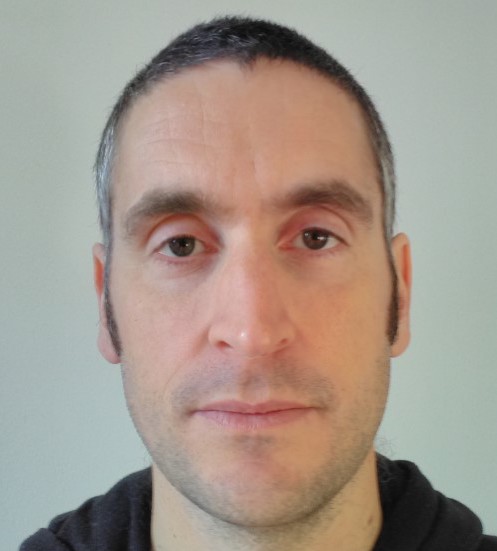
Cecilia Palombo and Ed Hayes
University of Leiden
The 7th-century Arab Muslim conquests changed the socio-political configurations in the Mediterranean and Eurasia forever. Yet we do not really know how the Arabs managed to gain dominance of this vast, ethnically, religiously and linguistically diverse area which had its own, long imperial traditions, and to make this a sustainable enterprise. What built the empire, and what held it together?
"Embedding Conquest" investigates the mechanics and structures of social, economic and personal dependency that tied the diverse regions of the early Islamic empire together, from the Nile Delta to the Hindu Kush. We approach this broad question as a team by examining a vast corpus of documentary letters written on papyrus, paper, potsherds, and other materials, as well as letters reproduced in literary sources. In our demo, we will present some of our most salient preliminary findings. We will focus on the elements of our research that best highlight the coparticipation of religious leaders and religious agents from different groups, environments, and communities.
The project studies the mechanics of Islamic rule through three main areas: the language of social dependency expressed, in particular, in letters of request; the relationship between central and provincial governorship; and the role of local elites as well as actors at the fringes of government, such as religious scholars, among others. Our research is comparative, as it embraces local realities in different regions and looks at a variety of groups, not to mention sources in several languages and scripts; attentive to trends and trajectories, as it covers over three centuries; and innovative, as it is based on most recent findings in papyrology and archaeology, combining them with new perspectives in Middle East history. For the virtual forum on "Jews, Christians, and Muslims as Colleagues and Collaborators in the Abbasid Near East" we would like to briefly present the research of two team members in particular, the project's postdoctoral fellows Ed Hayes and Cecilia Palombo, who have been working on the intersection of religious leadership and political governance. Ed Hayes' research focuses on the history of early Imami Shi'i communities and on the relationship between fiscal policy and religious protest. Cecilia Palombo's research, on the other hand, looks at the development of localized forms of Islamic governance through the involvement of Christian religious leaders, such as monastic headmen.
We hope to take the opportunity of this Forum for sharing some of our insights concerning the role of religious leaders from different communities in shaping and establishing early Islamic rule; and concerning the way in which those leaders' political activities, at the same time, contributed to shape religious knowledge and experience.
Interactions between Syriac
Christians and Muslims
in the Early ʿAbbasid Near East:
Ḥanpā as a
Legal Category

Jessica Mutter
Oklahoma State University
The term ḥanpā (pl. ḥanpē), Syriac ‘pagan,’ was used by Syriac Christian scholars to denote a variety of non-Christian religious communities and was one of the first Syriac terms used to refer to Muslims. While other Syriac terms came into use to denote Muslims over the course of the seventh and eighth centuries, C.E., ḥanpā remained common well into the ʿAbbasid period, especially in legal writing. This paper focuses on the use of ḥanpā/ḥanpē in Syriac Christian legal writing in the early ʿAbbasid period to signify Muslims.
In this paper, I argue that, when used in Syriac Christian legal texts, the term ḥanpā should be viewed as a legal category, one that very much included Muslims. In this context, a ḥanpā is essentially an outsider who may still interact with Syriac Christian individuals and communities, but in an increasingly regulated way that is meant to protect Syriac Christian communities from loss of constituents (presumably to conversion to Islam) or the blurring of boundaries between Muslim and Christian beliefs and practices. For example, marrying one’s daughter to a pagan was condemned in the canons of George I of Antioch (d. 790 C.E.), and marrying a daughter to a ḥanpā barred father and daughter from entering the church. It is clear this ruling included Muslim men, or perhaps was specifically meant for them. In contrast, earlier Syriac Christian leaders such as Jacob of Edessa (d. 708 C.E.) allowed Christian women who married Muslim men to continue taking communion, on grounds that not allowing them to do so would encourage conversion to Islam. Use of ḥanpā to describe Muslims in the early ʿAbbasid era suggests an attempt to regulate interactions with Muslims, with a particular emphasis on marriage, conversion, and social interactions.
Jessica Mutter is a postdoctoral researcher in medieval Middle Eastern History at Oklahoma State University, where she is working on the Historical Index of the Medieval Middle East, a multilingual digital history project led by Thomas Carlson and funded by the NEH. Dr. Mutter obtained her PhD in early Islamic history from the University of Chicago in 2018. Her current research examines Syriac and Arabic writing on religious conversion and interactions between Muslims and Christians in early Islamic Syria and Iraq.
Friday, December 11, 2020
Labeling
Religious Affiliation
in Ibn Abī Uṣaybiʿa's History of Physicians:
A Quest
Respondent: Rémy Gareil (Lumière Lyon 2 University)
The biographical dictionary of Ibn Abī Uṣaybiʿa (1203–1270 AD), titled The Best Accounts of the Classes of Physicians (Arabic, ʿUyūn al-anbāʾ fī ṭabaqāt al-aṭibbāʾ) or History of Physicians for short, is perhaps unequaled in the extent to which it details the social interactions of scholars from many different religious communities. Ṭabaqāt literature in general tends to provide a kind of Who’s-Who resource collecting information about personages in particular categories, such as hadith transmitters or poets. Normally authors tended to make these categories applicable to a certain religious tradition, but Ibn Abī Uṣaybiʿa’s project broke the mold by outlining a profession (medicine and related areas) in which collaboration and exchange among communities was typical. The History of Physicians is thus an ideal target for large-scale analysis of interreligious exchange, as the project “Communities of Knowledge” is in the process of doing.
Nevertheless, incorporating “religious affiliation” as a factor in analyzing Ibn Abī Uṣaybiʿa’s text is fraught with complexity. First is the looming issue of what religion even means in this context. Second is the question of which terms or phrases the author uses to intentionally signal a particular affiliation. Third, which other characteristics may be taken to indicate religious affiliation, as perhaps certain titles, professions, actions, or (very cautiously) names? Finally, what should be done with mixed indications, whether these are due to inaccurate sources, ambiguous affiliation, or conversion?
I will present a case for recording these textual indications using the prosopographical tool of “factoids,” which can support a more nuanced analysis than simply recording a single affiliation for each person. Each factoid, representing an assertion by Ibn Abī Uṣaybiʿa or his sources, is one of several markers of religious affiliation, which may point toward different affiliations for the same person. The strength of these markers and their agreement or variance for a particular person provide specific data points that can be used to reconstruct networks of communities while also allowing for alternate scenarios.
The “Communities of Knowledge” project is funded by the “Kleine Fächer – Große Potentiale” program of the German Federal Ministry of Research and Education, 2018–2021.
Nathan P. Gibson, Ph.D., is a postdoctoral researcher at the University of Munich (LMU) and the principal investigator of the Communities of Knowledge project studying interreligious networks of scholarship in Ibn Abī Uṣaybiʿa's History of the Physicians (ʿUyūn al-anbāʾ). His research explores both the social and theological dimensions of Jewish-Christian-Muslim interaction. He is particularly active in digital humanities projects, including Biblia Arabica and Syriaca.org. In his doctoral dissertation (The Catholic University of America, 2015), he analyzed the social argumentation of al-Jāḥiẓ, a popular 9th-century Muslim essayist who in the Refutation of Christians turned his attention to the role of Christians and Jews in an Islamically governed society.
Indexing a Shared Knowledge Culture from
Many Perspectives
Historical Index of the Medieval Middle East
 (HIMME)
(HIMME)
as a Tool for
Researching Diversity

Thomas A. Carlson
Oklahoma State University
The medieval Middle East, at the crossroads of Africa and Eurasia, included more distinct yet intersecting literary traditions in more languages than any other part of the premodern world. While several of these literary traditions were religiously demarcated, others such as Arabic and Persian were multi-religious written cultures. Despite this, the religious diversity of this region is often conceptualized as separate communities who sometimes interacted. Religion was certainly a socially relevant category employed by medieval people to organize their world, and yet people from every religion wrote about the same government, the same society, and largely the same culture as expressed in religious multiplicity.
A new digital research project (HIMME: Historical Index of the Medieval Middle East) is developing a reference tool to demonstrate the shared culture and society of the diverse medieval Middle East. It will provide a union index to selected primary sources in Arabic, Armenian, Greek, Hebrew, Latin, Persian, and Syriac, indexing the people, places, and practices mentioned in each literary tradition. The result is that someone interested in, for example, the famous counter-Crusader (and sultan loyal to the Abbasid caliphate) Ṣalāḥ al-Dīn can search a database and discover relevant primary sources in unexpected Hebrew and Syriac as well as expected Arabic and Latin sources, while the later conqueror Timur Lenk is also mentioned in Greek and Armenian texts that might easily be missed. This presentation will offer a preview of the project (to be published officially on August 1, 2021), a discussion of its scope, and an exploration of its implications for the culture of knowledge shared among Jews, Christians, and Muslims of the medieval Middle East.
This project has been made possible in part by the (USA’s) National Endowment for the Humanities: Exploring the human endeavor.
Any views, findings, conclusions, or recommendations expressed in this presentation do not necessarily represent those of the (USA’s) National Endowment for the Humanities or of Oklahoma State University.
Thomas A. Carlson is Associate Professor of Middle Eastern history at Oklahoma State University (Stillwater, OK, USA). His research explores the dynamics of religious and linguistic diversity of the medieval Middle East. His book Christianity in Fifteenth-Century Iraq (Cambridge University Press) appeared in 2018, and he has published several articles on the surprisingly slow process of demographic Islamization in the Middle East. He is the Principal Investigator on the project HIMME: Historical Index of the Medieval Middle East (funded by the US National Endowment for the Humanities) which will be published in 2021.

